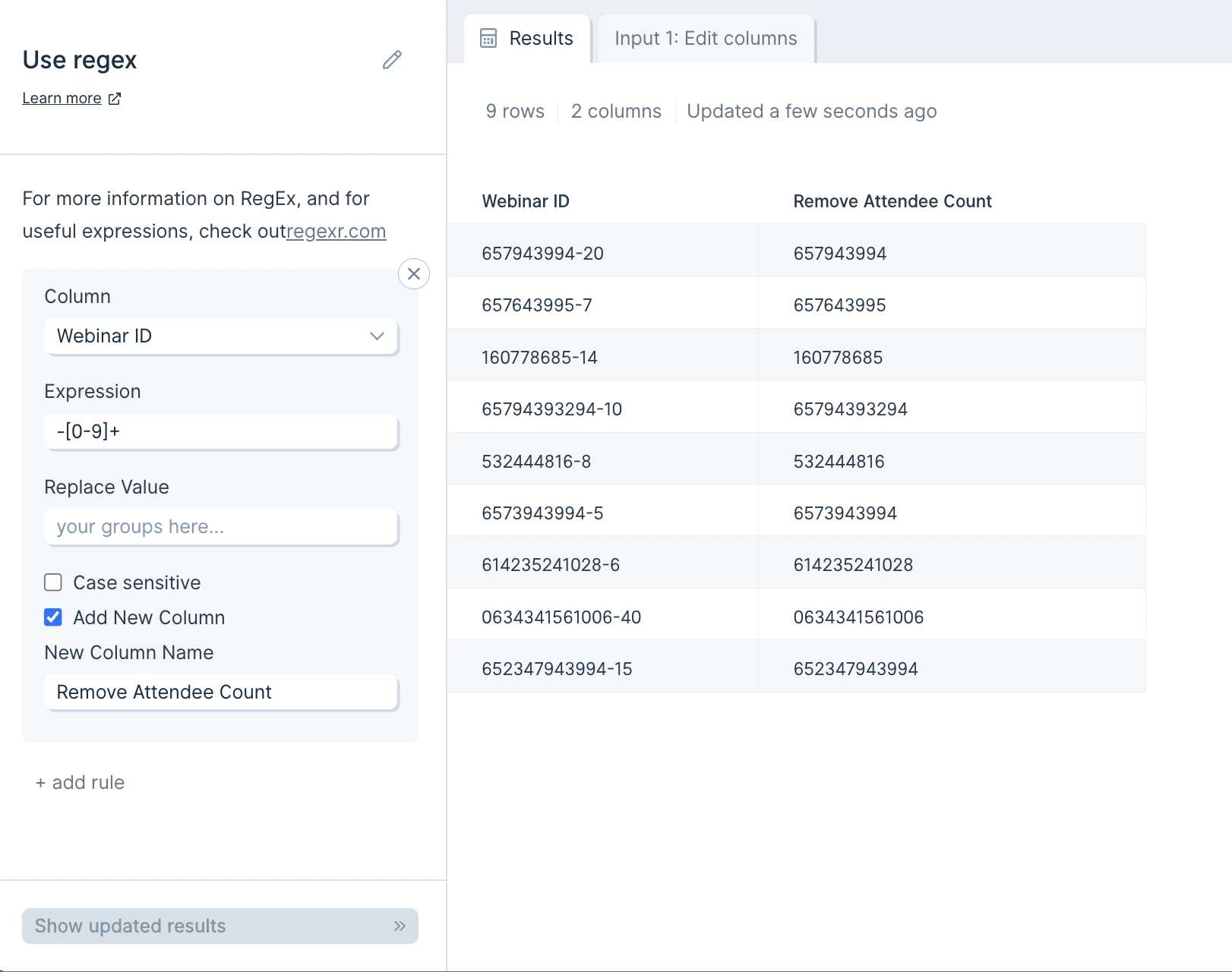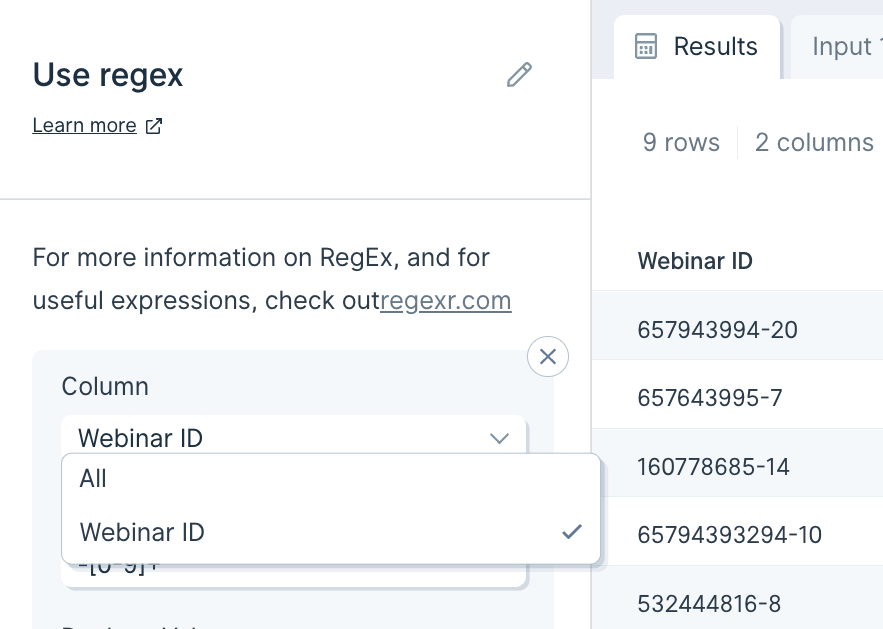Replace with Regex
The Replace with Regex step matches patterns using Regular Expression to find or replace values. Regular Expressions, or RegEx for short, are useful for matching patterns in text or numbers (or anything, really). RegExr.com is an excellent resource to use when composing your regular expression.
Before you jump in... We recommend exploring the "Extract text from column," "Find and replace," and "Clean data" steps. These steps are often able to accomplish the same result without writing a Regular Expression.
Input/output
For our input data, we'll use a list of nine Webinar IDs. The number displayed after the hyphen "-" is the number of attendees that can sign up for the Webinar. We're looking to extract the Webinar ID and display it in a new column.

Our output after using this Replace with Regex step is a new column "Remove Attendee Count" with the numbers that display before the hyphen in the original Webinar ID values.

Custom settings
To start configuring your first rule, you'll select the column we should apply the RegEx too. You can also select to search through All from the Column dropdown.

Then, input the expression we should look for in the Expression field.
If you'd like to replace the value with something specific, put that value in the Replace Value field. In my case, since I wanted to remove the found expression and only retain the remaining number, I left this field blank.
You can click the checkbox to "Add New Column" if you want to preserve the original data column but display the extracted value in a new column. In my example, I selected to "Add New Column" and placed my column name, "Attendee count" in the New Column Name field.
You can create as many RegEx rules as you'd like in a single Replace with Regex step. To do so, click the button to "+ add rule".
Helpful tips
Again, we recommend RegExr.com as a useful tool when working with RegEx. We particularly find their "Community Patterns" section useful where you can find RegEx patterns that others have used before.
You can also consider experimenting with AutoRegex.xyz, which is a useful app that uses GPT-3 to convert plain English to RegEx.
Characters
- . any character, except a newline
- \w any word
- \d any digit
- \s any whitespace
- \W anything except a word
- \D anything except a digit
- \S anything except whitespace
- [abc] any of a, b, and/or c - you can use dashes in here too such as [a-z] or [0-9]
- [^abc] not a, b, nor c - you can use dashes in here too such as [a-z] or [0-9]
- [a-g] any character between a and g
- [0-5] any digit between 0 and 5
Quantifiers and Alternators
- a* any amount of the letter a in a row. 0 or more
- a+ 1 or more of the letter a in a row
- a? 0 or 1 of the letter a
- a{5} exactly 5 of the letter a in a row
- a{2,} 2 or more of the letter a in a row
- a{1,3} between 1 and 3 (inclusive) of the letter a in a row
- a+? 1 or more of the letter a in a row, but match as few as possible
- a{2,}? 2 or more of the letter a in a row, but match as few as possible
- ab|cd match either ab or cd in a cell
Anchors
Anchors help you define how an expression is related to the beginning or end of a cell
- ^abc the cell that starts with abc
- def$ the cell that ends with def
- ^$ a blank cell
Escaped characters
Using a backslash, you can indicate invisible characters, or escape any character that normally has a special purpose
- \. escape a dot so that it is seen as an actual dot
- \* escape an asterisk so that it is seen as an actual asterisk
- \\ escape a backslash so that it is seen as an actual backslash
- \t find a tab in your text
- \r find a newline in your text
- \n find a different type of newline in your text
Groups & Lookarounds
Groups are used to capture bits of text and then interact with them in the replacement function.
- (abc) capture the group that contains abc within a cell
- $1 reference the first capture group (in the "replace" field). Use $2 for the second capture group, etc.
- $& reference all capture groups (in the "replace" field)
- (?:abc) non-capturing group that contains abc within a cell
- (?=abc) positive lookahead
- (?!abc) negative lookahead